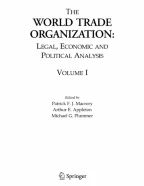
When considering how the GATT/WTO system has addressed issues relating to the civil aircraft industry, a central issue is how the system has responded to the role of governments in promoting their domestic industries. Given the enormous development costs in the aircraft industry, as well as national prestige, export potential, employment and the important overlap with defense production, governments have historically had a significant role in providing direct or indirect assistance to the civil aircraft industry. Therefore, the GATT/WTO subsidy disciplines as they relate to the civil aircraft sector necessarily have had to strike a balance between two competing considerations. On the one hand, the rules need to constrain governments from distorting trade. Onthe other hand, the rules inevitably reflect the view of many governments that they have an important role to play in the initial development of this capital-intensive industry, particularly given its potential significance for national security. Because of the centrality of this issue to understanding the role of the international trading system vis-a-vis civil aircraft, we devote significant attention in this chapter to the evolution of GATT/WTO subsidy disciplines in this area.
Mr. Cunningham and Mr. Lichtenbaum were partners in the Washington, D.C. law firm of Steptoe & Johnson LLP and advised The Boeing Company and Bombardier Inc. on certain international trade issues. Mr. Lichtenbaum has since left the firm to become Assistant Secretary of Commerce for Export Administration. The views set forth herein are the authors’ own and are not to be taken as a statement of the views of any of their clients or of the United States Department of Commerce. The authors wish to thank Yves Botteman for his assistance.
This is a preview of subscription content, log in via an institution to check access.